In the study of gemology and what defines a gem material, one of the key characteristics is gemstone ‘durability’. The importance of durability ties in with other characteristics, such as gemstone ‘beauty’. If a gem isn’t beautiful, it may be considered less desirable, so durability would not matter. However, if a gem material is beautiful, a buyer or collector will normally want a gemstone to last their entire life, if not longer. A gemologist considers hardness as part of durability and defines it as the ability of a material to resist scratching and abrasion.
It’s important to understand the durability of an object is in part a measurement of its hardness comparable to everything around us.

What is the history of gemstone and mineral hardness?
For over 2,000 years, there has been a general understanding of the relative hardness of one material over another. Pliny the Elder wrote about the classification of minerals by their different physical properties in his text ‘Natural History’ around 77 A.D. Three-hundred years before Pliny, Theophrastus, a student of Aristotle and specialist in botany, wrote ‘Peri Lithon’ or ‘About Rocks’, an important book on gems and minerals.
In this text, Theophrastus took a very practical look at the rocks and minerals he encountered. For centuries before, minerals were still viewed with mythical and magical properties that different societies assigned to them. Theophrastus noted the physical attributes and relative hardness of minerals that we still consider today. His notes on the heft, luster, texture, hardness and transparency of about fifty different materials were so authoritative that Friedrich Mohs used them as an important reference 2,000 years later for the Mohs Hardness Scale.

Who was Friedrich Mohs?
Friedrich Mohs was an Austrian geologist and mineralogist whose professional experience spanned from the mining industry to working for private clients and lecturing. When Mohs returned to become a university professor, he advanced the study of mineral identification based on the physical details of the materials he examined. His scale of relative hardness is a significant and widely used measure for gemstones today.
What is the Mohs Scale of Hardness?
The Mohs Scale of Hardness is a scale from one to 10 (10 being the hardest) with its foundation using 10 different common minerals and gem materials of differing hardness representing each of those numbers. Naturally, many materials have some difference in hardness based on type or impurities, and there are many that fall somewhere between these numbers. Each of these 10 minerals and gems will scratch one with a lower number or be scratched by one with a higher number on the scale.
It is important to know that this scale of hardness is not linear, meaning the higher value is not a fixed percentage harder than the value before it. The top end of the scale is the best example of this. Diamond is a 10 on the Mohs Hardness Scale and is four times harder than corundum (sapphire and ruby) at nine. Topaz, at eight on the Mohs Scale, is half as hard as corundum above it.

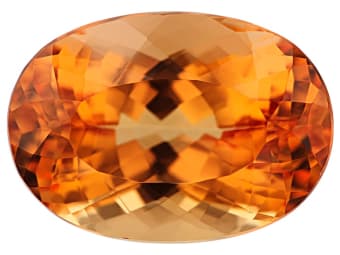
What does the Mohs Hardness Scale tell us?
The hardness of a gemstone is not only important to those identifying it, but it's a key factor for anyone considering a purchase. Certain jewelry items will potentially experience more wear than others over their lifetime; for example, necklaces and earrings are not exposed to the same likelihood of bumps and bashes as rings might be. Also, some jewelry items are more likely to see an extended period of regular or lifetime wear, such as engagement rings. So, it’s best that the gems used for these purposes are more durable, so they can be enjoyed over a lifetime.
The hardness of diamonds, rubies, and sapphires play a big part in their popularity as engagement rings.
What are other factors to consider when selecting gemstones?
- Directional Hardness: Some gem materials will have the same or similar hardness value in all directions, but others have varying hardness values, which vary with direction – hence the term ‘directional hardness’. The way a crystal grows is determined by the atomic bonds of the elements it’s made of, and these bonds can be stronger in specific directions of crystal growth than others. A great example of this is kyanite which has the most extreme directional hardness of any common gemstone, 4.5 in one direction and 7 in another.
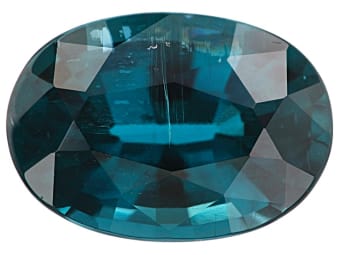
- Brittleness: A gemstone like zircon has a Mohs Hardness measurement of 7.5, but zircon is known for getting scraped facet edges if it isn’t treated with care. Gem traders know not to store faceted zircons in a packet next to each other because the sharp facet edges will damage and dull each other in transit.
- Toughness: Gemologically defined as the ability to resist fracture (random breakage) or cleavage (directional breakage) in gem materials. Toughness is best illustrated by jadeite, a material that is so tough that historical weapons could be made from it with high resistance to chipping or breaking. Jadeite, however, measures between 6.5 and 7 on the Moh’s Hardness Scale. Although jadeite jade isn’t super hard it is exceptionally tough. Why is this? Well, jadeite jade is polycrystalline – meaning that it is made up of many, many randomly orientated microscopic crystals, so while the individual crystals may not be that hard, together they are incredibly resilient, hence the toughness.
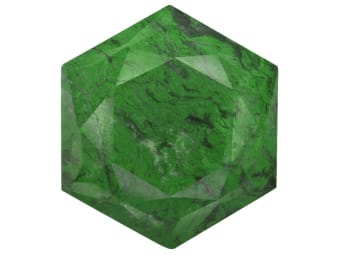
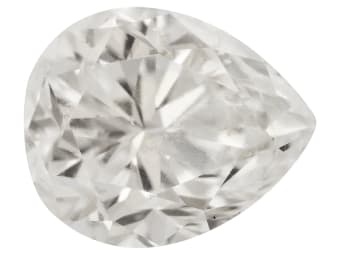
- Another example is diamond which has a hardness value of 10. As hard as a diamond is, it can cleave or split cleanly along the plane of weaker crystal growth. So, it’s hard but not necessarily tough, but don’t worry diamond doesn’t cleave easily. A deliberate notch has to be cut into the diamond first and then struck with great force at a certain angle, using a special metal blade and hammer. This is how rough diamonds are sometimes divided before cutting and fashioning.
- Rarity: If it is rare (difficult or expensive to acquire), then the fourth characteristic of gem material, ‘desirability’, is going to depend on the gem material’s durability. The wing of an exotic butterfly or the elytra (hard protective wing cover) of a beetle may be stunning to look at, but they are hardly durable enough to survive long as an earring, let alone any other jewelry.
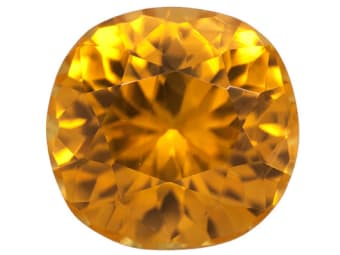
Conclusion
The key element of gem material, durability, is neatly quantified by Mohs Hardness Scale, but it doesn’t always tell the full story. After all, there are other important characteristics of gem materials that should be considered by collectors or gemologists.
Moreover, gemologists do not often use hardness testing because it is a destructive test. To scratch a gemstone to establish its hardness is to damage it, and this is unacceptable in the gemstone business. Gemologists can use their skills of observation to observe and then assess signs of wear and damage which can give an indication of the hardness of a material – this can be carried out during an appraisal, identification or when recommending settings for a loose gemstone.
Nonetheless, understanding the Mohs Scale of Hardness gives a useful appreciation of what to look for when selecting gemstones to wear in jewelry or to display safely at home.

